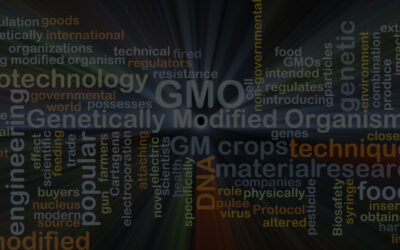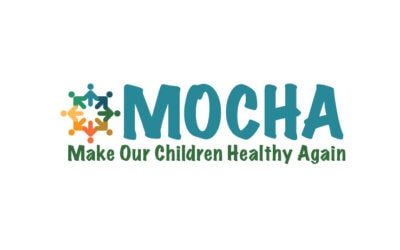Judy Hoy is a scientist, wildlife biologist, and educator, who taught elementary school for 12 years, rehabilitated wildlife for 50 years, continuously documented the birth defects that began occurring on wildlife in spring of 1995 and has co-authored several scientific papers on animals and plants.
Specific birth defects are relatively high in prevalence on both wild and domestic animals, and even more concerning, on newborn children. Newborn children are approximately the same size as newborn deer fawns. White-tailed deer fawns have been a main study subject for over twenty years regarding specific birth defects and other effects of exposure to imidacloprid, a neonicotinoid insecticide and likely simultaneous exposure to glyphosate, an extensively used herbicide.
Nearly all white-tailed deer tested recently in Minnesota had neonicotinoid pesticides in their spleens. Those are the same pesticides that are causing birds and bees to get lost or quickly die when exposed, especially the insecticide called imidacloprid. [5] Scientists reported three years ago that a high prevalence of tested white-tailed deer in Minnesota had neonicotinoid pesticides in their spleens. [1] In 2021, 94% of the deer spleens tested positive for neonicotinoids, again especially imidacloprid. [2] Neonicotinoids or neonics are insecticides that are toxic to vertebrates [4] and invertebrates. [6] In North Dakota, harvested wild deer tested had an average of 3.5 times more imidacloprid in their spleens [3] than the captive deer used in the SDSU study [4], who were intentionally given the pesticide.
The expanding use of neonicotinoid insecticides is contaminating the food and water ingested by all animals because it falls in rain and snow on foliage and into surface water everywhere.
Exposure can lead to organ damage, birth defects, lethargy, and mortality in vertebrates, as well as mortality in most invertebrates necessary for human and other vertebrate survival. [3][5]
This extensive testing and research on white-tailed deer happened because the birth defects were brought to the attention of the Montana Department of Fish, Wildlife and Parks (MDFWP) in 1996 by biologists who worked for MDFWP. Those birth defects were subsequently reported in studies and have prompted a much wider concern and larger amount of testing and research in other states than they did locally in Montana [7][8].
Most concerning for people and particularly pregnant mothers, a new study was published that shows neonicotinoid insecticides and their metabolites are able to pass through the human placenta to expose the fetus whenever the mother is exposed. [9]. Consider if imidacloprid can do that on a pregnant human, it certainly can do the same on other pregnant mammals.
An even more recent and extremely concerning study was done on infants to determine neonicotinoid exposure levels in newborn humans. [16] The study found significant levels of neonicotinoids, especially imidacloprid, in breast milk (0.27 ng/mL), infant formula (0.22), and tap water (0.028). A higher median concentration of neonicotinoids were in infants’ blood samples than in urine samples. [16]
All recent testing shows alarming levels of imidacloprid in white-tailed deer, in human mothers to be, and in newborn children. In addition, thousands of studies show imidacloprid has dire effects on developing young, newborns and adults of other vertebrates, and most invertebrates. One group of vertebrate species that has received little attention until recently are avian pollinators, especially hummingbirds. Within 2 hours after deliberate imidacloprid exposure, wild-caught Ruby-throated Hummingbirds exhibited a significant depression in energy expenditure (up to 25%±11%) [17]. Therefore, changes in their metabolism following exposures to imidacloprid, “…could significantly influence survivorship” for hummingbirds and other avian pollinators, especially hatchlings.
Since birth defects and mortality was shown to be in direct correlation with the imidacloprid levels in the spleens of white-tailed deer [4], it is highly likely that imidacloprid exposure is having similar effects on human fetuses and newborns. Newborn humans were observed to be born with the same or very similar birth defects found on deliberately exposed white-tailed deer. Most importantly, in the same time period as wild deer were born with those distinctive defects, the young of many other vertebrate species were born with the exact same developmental malformations. [11]
Thus, the research strongly suggests neonicotinoids should never have been used, should no longer be used anywhere and should be banned immediately.
The experts quoted in an article by Kenny Stancil on May 05, 2023, “EPA Report on Neonics Proves US Has ‘Five-Alarm Fire’ on Its Hands, Green Groups Say” strongly support this. [18] Quoted, “…A newly published assessment from the U.S. Environmental Protection Agency warns that three of the most commonly used neonicotinoid insecticides threaten the continued existence of more than 200 endangered plant and animal species.” And “…there’s now no question that neoicotioids play an outsized role in our heartbreaking extinction crisis.”
Another concerning new study regarding human mothers and babies who are exposed to the world’s most used herbicide, glyphosate, was also published recently.[10] This was stated by the researchers about the study; “…This groundbreaking study builds on growing research that has linked glyphosate to birth defects, miscarriage, and infertility in animal studies. Yet the EPA still allows more than 250 million pounds of glyphosate to be sprayed on American farmlands each year!” This new study indicates that researchers are seeing very similar health issues and mortality in human newborns to those reported on wildlife and human newborns in our 2015 study. [11]
We hypothesize that the imidacloprid and glyphosate are working synergistically in exposed animals to cause far greater cellular damage than either toxicant alone.
The phosphonate, N-(phosphonomethyl)glycine, known as glyphosate, is a broad-spectrum systemic herbicide and crop desiccant. A 2015 study implicated glyphosate in causing prion diseases, including Chronic Wasting Disease (CWD) because glyphosate is a mineral chelator and disrupts the mineral balance. [12] Originally patented as a metal chelator, glyphosate binds to essential minerals in the soils, thereby reducing their uptake by plants, which is how it kills plants.
Glyphosate falling in rain and snow on all the plants that wild ungulates eat reduces the minerals in the plants ingested [13], simultaneously resulting in exposure to glyphosate and compounding mineral deficiency in the exposed grazing animals. [11] Ironically, if the animal does receive adequate manganese in its diet, exposure to the glyphosate disrupts bile acid homeostasis promoting a toxic accumulation of manganese in the brainstem. [12] This can result in animals developing prion diseases like CWD and bovine spongiform encephalopathy (BSE), which are serious health concerns for wildlife, domestic livestock, and humans. [12]
Below, note other important facts regarding glyphosate:
- Nearly 1 lb. of glyphosate for every person in the US is sprayed per year.
- It’s water soluble, so our rain and groundwater are also contaminated.
- It’s a patented antibiotic by Monsanto/Bayer, killing off the beneficial microbes and promoting the growth of the pathogens.
- It binds crucial biologically important metals, such as zinc, magnesium, and manganese.
- It’s used off-label as a crop desiccant (drying agent), which means at harvest, crops like oats, wheat, and legumes take up whopping amounts of glyphosate.
- Roundup-Ready crops are GMO and do not die when sprayed.
Glyphosate was also patented by Monsanto in 2010 as an antibiotic, which stimulates populations of oxidant microorganisms and suppresses reducing microorganisms in the soil. This is another mechanism for decreasing the availability of manganese, iron, zinc, and other essential micronutrients to plants and to the animals that eat the plants. [12] The resulting mineral imbalance causes numerous health issues, birth defects [11] and likely prion diseases. [12]
In the mid-1980s, autism was extremely uncommon. Now autism prevalence is approximately 1 of every 30 babies born and increasing each year, varying by sex and location.
(Editor note: GMOScience.org has been reporting on the relationship between autism and glyphosate, here. For more information regarding the effects of glyphosate, GMOs and children’s health, read, What’s Making our Children Sick? by Drs. Perro and Adams.)
Glyphosate has been shown to cause autism-like symptoms in exposed study animals [14] and seriously disrupt the microbiota in invertebrates and vertebrates. [15] In March of 2023, a study showed that exposure to glyphosate and its break down product aminomethylphosphonic acid (AMPA) is responsible for the high prevalence of liver inflammation and metabolic syndrome in young humans, increasing the risk of heart disease, stroke, and diabetes. [19]
In 2020, a very important review was published by Cerrizuela et al. [20], which listed the top chemicals that are serious teratogens; conditions or toxicants, which cause disrupted fetal development in vertebrate species. The authors have 6 pesticides in their list of top teratogens shown by studies to disrupt neural crest development, which results in multiple birth defects on newborns, especially mammals. One, chlorpyrifos, was used long before certain definitive birth defects began on wildlife, domestic animals, and human babies in spring of 1995. Two other pesticides, triazole derivatives and carendazim are not widely used. That left three highly teratogenic pesticides, glyphosate-based herbicides (GBH), the neonicotinoid insecticide, imidacloprid, and the fungicide, chlorothalonil, which are also the three most widely used pesticides in the US.
Those are the three pesticides that my colleagues and I have implicated by timing and new types of exposure effects to be working synergistically to cause the definitive developmental defects on vertebrate species since spring of 1995. As stated above, imidacloprid has been shown to cause mortality to adults and young of ruminant species, birds, and many kinds of invertebrates, especially pollinators. [4, 5]
In addition, large applications of chlorothalonil began being used for potato blight the same year that imidacloprid was first used in spring of 1994. [7] High applications of GBH were already being used beginning in the 1970s, but the definitive birth defects did not begin until the spring after large amounts of all three of those teratogenic pesticides began being used at the same time in spring and summer of 1994. It was not likely a coincidence that the high prevalence of several uncommon and one new to science birth defects began occurring simultaneously on vertebrate species, since all experience neural crest development in the egg or womb.
If you are interested in seeing photos of the birth defects that are happening to wildlife, especially mammals and birds, I have a website with photo documents showing photos of the birth defects on multiple vertebrate species. To access, scroll down to the PDFs, download, and click to find the photo documents comparing birth defects to normals. Our studies are also discoverable there, as well as the SD study that was published in Nature.
References:
- Dan Gunderson, “Data show increasing insecticide levels in Minnesota deer,”MPR News, Moorhead, Minn. August 23, 2022. https://www.mprnews.org/story/2022/08/23/data-show-increasing-insecticide-levels-in-minnesota-deer
- Paul Richards, “Biologists in Minnesota are Finding More Insecticides in Whitetail Deer Than Ever Before,” Field & Stream, August 29, 2022. https://www.mprnews.org/story/2022/08/23/data-show-increasing-insecticide-levels-in-minnesota-deer
- Rob Beer, “Study shows widespread neonicotinoid exposure in Minnesota white-tailed deer,” Twin Cities, March 1, 2021. https://www.twincities.com/2021/03/01/study-shows-widespread-neonicotinoid-exposure-in-minnesota-white-tailed-deer/amp/
- E. H. Berheim, et al. “Effects of Neonicotinoid Insecticides on Physology and Reproductive Characteristics of Captive Female and Fawn White-tailed Deer, March 14, 2019. https://doi.org/10.1038/s41598-019-40994-9
- Mia Rabson, “No doubt that neonicotinoids are killing birds, bees, scientists say,”CBC News, September 17, 2019. https://www.cbc.ca/news/politics/pesticide-bee-bird-deaths-neonicotinoids-1.4296357
- Lauren Aratani, “Pesticide widely used in US particularly harmful to bees, study finds,” The Guardian, August 6, 2019. https://www.theguardian.com/environment/2019/aug/06/us-pesticide-neonics-toxic-harmful-bees-study
- Hoy, J.A., Hoy, R.D., Seba, D., Kerstetter, T.H., 2002. Genital abnormalities in white-tailed deer (Odocoileus virginianus) in west-central Montana: Pesticide exposure as a possible cause. J. Environ. Biol. 23, 189–97. http://www.ncbi.nlm.nih.gov/pubmed/12602857.
- Hoy, J.A., Haas, G.T., Hoy, R.D., Hallock, P., 2011. Observations of brachygnathia superior in wild ruminants in western Montana, USA. Wildl. Biol. Pract. 7(2), 15–29. http://dx.doi.org/10.2461/wbp.2011.7.13.
- Zhang H, Bai X, Zhang T, Song S, Zhu H, Lu S, Kannan K, Sun H. Neonicotinoid Insecticides and Their Metabolites Can Pass through the Human Placenta Unimpeded. Environ Sci Technol. 2022 Nov 28. doi: 10.1021/acs.est.2c06091. Epub ahead of print. PMID: 36441562.
- Gerona, R.R., Reiter, J.L., Zakharevich, I. et al., 2022. Glyphosate exposure in early pregnancy and reduced fetal growth: a prospective observational study of high-risk pregnancies. Environ Health 21, 95. https://doi.org/10.1186/s12940-022-00906-3 https://ehjournal.biomedcentral.com/articles/10.1186/s12940-022-00906-3
- Hoy, J., Swanson, N., Seneff, S., 2015. The high cost of pesticides: Human and animal diseases. Poult. Fish Wildl. Sci. 3,132. https://doi: 10.4172/2375-446X.1000132.
- Samsel, A., Seneff, S., 2015. Glyphosate, pathways to modern diseases III: Manganese, neurological diseases, and associated pathologies. Surg. Neurol. Int. 6:45. doi: 10.4103/2152-7806.153876
- Huber, D.M., 2007. Strategies to ameliorate glyphosate immobilization of Mn and its impact on disease. Phytopathology 97, S168. https://doi.org/10.1094/PHYTO.2007.97.7.S166
- Pu, Y., Yang, J., Chang, L., Qu, Y., Wang, S., Zhang, K., Xiong, Z., Zhang, J., Tan, Y., Wang, X., Fujita. Y., Ishima, T., Wang, D., Hwang, S.H., Hammock, B.D., Hashimoto, K, 2020. Maternal glyphosate exposure causes autism-like behaviors in offspring through increased expression of soluble epoxide hydrolase. Proc Natl Acad Sci U S A. 2020 May 26;117(21):11753-11759. doi: 10.1073/pnas.1922287117. Epub 2020 May 12. Erratum in: Proc Natl Acad Sci U S A. 2021 Feb 2;118(5): PMID: 32398374; PMCID: PMC7260984.
- https://www.ehn.org/monsanto-glyphosate-impacts-wildlife-2631750527.html
- Zhang, H., Wang, Y., Zhu H., Lu S., Wang, Y., Xue, J., Zhang, T., Kannan, K., Sun, H., 2023. Infantile internal and external exposure to neonicotinoid insecticides: a comparison of levels across various sources. 16. Infantile Internal and External Exposure to Neonicotinoid Insecticides: A Comparison of Levels across Various Sources. Environmental Science and Technology 2023 57 (13), 5358-5367 DOI: 10.1021/acs.est.2c09538
- English, S.G., Sandoval-Herrera, N.I., Bishop, C.A., Cartwright, M., Maisonneuve, F., Elliott, J.E., Welch, K.C. Jr., 2021. Neonicotinoid pesticides exert metabolic effects on avian pollinators. Sci Rep. Feb 3;11(1):2914. doi: 10.1038/s41598-021-82470-3. PMID: 33536520; PMCID: PMC7858574. https://www.ncbi.nlm.nih.gov/pmc/articles/PMC7858574/
- https://www.commondreams.org/news/us-epa-neonicotinoids-extinction-crisis Article by Kenny Stancil May 05, 2023 “EPA Report on Neonics Proves U.S. Has ‘Five-Alarm Fire’ on Its Hands, Green Groups Say.”
- Eskenazi, B., et al. 2023. Association of Lifetime Exposure to Glyphosate and Aminomethylphosphonic Acid (AMPA) with Liver Inflammation and Metabolic Syndrome at Young Adulthood: Findings from the CHAMACOS Study. EHP Vol. 131, No. 3. CID: 037001 https://doi.org/10.1289/EHP11721
- Cerrizuela S, Vega-Lopez GA, Aybar MJ. The role of teratogens in neural crest development. Birth Defects Res. 2020 May;112(8):584-632.https://doi:10.1002/bdr2.1644



